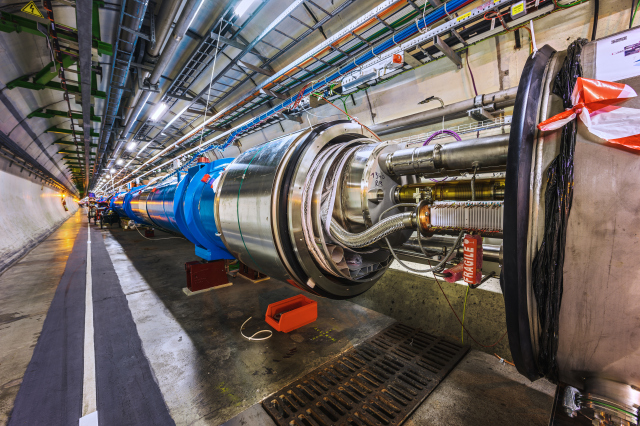Serbian scientists with CERN - European Organization for Nuclear Research
CERN (the European Organization for Nuclear Research) is one of the world's leading scientific research centers. CERN is a remarkable scientific institution that has played a major role in advancing our understanding of the universe. It is located in Geneva, Switzerland, and has been a hub of innovation and discovery since its founding in 1954.

CERN is best known for its particle accelerator, the Large Hadron Collider (LHC), which is the largest and most powerful particle accelerator in the world. It is used to study the fundamental particles that make up the universe and the forces that govern their behavior.
SERBIA and CERN
Serbia joined CERN as an associate member in 2012 and became a full member in 2019. This membership allows Serbian scientists and researchers to participate in CERN's research programs, collaborate with other scientists from around the world, and contribute to cutting-edge research in particle physics and other fields.
Serbian scientists have been involved in several important research projects at CERN, including the ATLAS experiment at the Large Hadron Collider (LHC), which played a crucial role in the discovery of the Higgs boson in 2012. Serbian researchers have also contributed to studies of antimatter, dark matter, and other fundamental particles.

In addition to its scientific research, Serbia's membership in CERN provides important opportunities for education and training in science and technology. Serbian students and young scientists have the opportunity to participate in CERN's educational and training programs, which provide hands-on experience in cutting-edge research techniques and technologies.
Serbia's membership in CERN is an important step forward for the country's scientific community and its efforts to promote science and technology as key drivers of economic and social development. It also reflects the strong commitment of the Serbian government and scientific community to international collaboration and the pursuit of scientific excellence.

At the moment, four scientific institutions from Serbia are actively participating in projects and experiments at CERN:
University of Belgrade:
- Institute of Nuclear Sciences "Vinča"
- Institute of Physics
- Faculty of Physics
University in Novi Sad:
- Faculty of Science and Mathematics
The 11th edition of the LHCP Conference is hosted by the Faculty of Physics and Institute of Physics of the University of Belgrade, in Belgrade, Serbia from 22th - 26th May 2023.
More about LHC
The LHC is a circular tunnel that is 27 kilometers (17 miles) in circumference and sits 100 meters (328 feet) underground. The accelerator uses powerful magnets to accelerate beams of protons or ions to nearly the speed of light. The beams are then collided with each other in four detectors, which record the resulting particles and their properties.
One of the main goals of the LHC is to search for the Higgs boson, a particle predicted by the Standard Model of particle physics. The discovery of the Higgs boson in 2012 was a major breakthrough in our understanding of the universe and confirmed the existence of the Higgs field, which is responsible for giving particles mass.

Did you know that WWW was developed by CERN?
In addition to its scientific research, CERN has also made important contributions to society through its development of technologies such as the World Wide Web. The web was invented at CERN in 1989 by British computer scientist Tim Berners-Lee as a way to share information between scientists around the world.
CERN's discoveries and innovations have had a profound impact on science and society, and it continues to be a source of scientific excellence and innovation worldwide.
The collaboration between Serbia and CERN has also helped promote science education and outreach in Serbia. It has facilitated the exchange of knowledge and expertise between Serbian institutions and CERN, enabling the training of young scientists and the development of scientific programs within the country.













